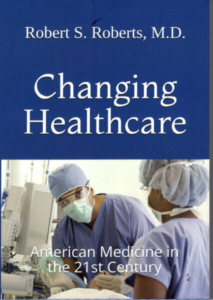ObamaCare is the healthcare system of America, but neither Republicans, nor Democrats really like it. Republicans have been trying to repeal and replace it since President Trump was elected in 2016, but a few divisive Senators prevented that from happening. Democrats claim to support it (they were responsible for 100% of the votes that passed the legislation in 2010), but spend most of their time talking about replacing it with a single-payer system or Medicare for All.
Is there a better system anywhere in the world?
Singapore may be the answer to that question. Singapore has long been promoted by healthcare economists and policy experts as a model system. While America is generally regarded as the place to get the most advanced medical treatment possible, the Singapore healthcare system compares favorably with the U.S.
Former U.S. Secretary of State, George P. Shultz, and Vidar Jorgensen, writing in The Wall Street Journal, believe we would do well to look closer at Singapore. Here are some important statistics in comparing the two systems:
- U. S. Life Expectancy – 78.7 years
- Singapore Life Expectancy – 85.2 years
- Singapore infant and maternal mortality rates less than half U.S. rates
- U. S. healthcare spending 18% of GDP
- Singapore healthcare spending 5% of GDP
What accounts for these differences?
The two biggest problems in holding down costs in the U.S. healthcare system are third-party payers and lack of transparency in medical prices. Both contribute to stifling competition. Competition always leads to lower pricing and improved quality, no matter what industry you’re comparing. Most consumers of medical treatment don’t know what they’re paying for their care – and aren’t really interested because third-party payers (insurance companies and the government) are paying most or all of the bills. This means patients don’t compare pricing in order to get the best value for their healthcare dollars.
When you go to purchase a car, you always compare prices before you buy. No third-party will be picking up the tab so you want to know you’re getting a good deal. But when insurance companies or the government are responsible for the bill, you don’t care what they’re paying. This is why healthcare costs are rising faster than inflation.
Here is how Singapore does better:
- Price Transparency– All healthcare providers in Singapore must post their prices and outcomes so buyers can judge the cost and quality.
- Health Savings Accounts– Singaporeans are required to fund HSAs through a system called MediSave and to purchase catastrophic health insurance. As a result, patients spend their own money on health care and get to pocket any savings.
- A limited but effective safety net– The MediFund program serves those who, after exhausting their health savings and government subsidies, still need help paying their bills.
These differences in the Singapore healthcare system have provided the financial incentives that led to price and quality competition so intense that healthcare costs are 75% lower in Singapore than in the United States. Imagine a 75% discount on your next healthcare bill! Scrips College economist Sean Flynn estimates a heart-valve replacement costs $12,500 in Singapore ($160,000 in the U.S.) and a total knee replacement $13,000 ($40,000 in the U.S.).
All of this is possible in the U.S.
The Trump administration has pushed for more price transparency through an executive order that requires insurers and providers to make price information available to beneficiaries, enrollees and participants in healthcare plans. Naturally, healthcare providers, especially hospitals and insurers are pushing back at any attempts to open their books to comparisons. But people spending their own money need to have information to find value in their healthcare spending.
Health Savings Accounts (HSAs) were introduced in America in 2003 as part of the Medicare Part D legislation of the Bush administration. But limitations on qualifications and yearly contributions have made them much less effective than they could be. I personally established an HSA account some years ago, but once I switched from private health insurance to Medicare at age 65 I was no longer eligible to make additional contributions. This needs to change if we want to lower healthcare costs. HSAs should be encouraged by increasing annual contribution ceilings and expanding eligibility to all Americans, no matter their age or insurance provider.
America can do better, but it will require bipartisan agreement that the goal is to empower consumers with prices to compare and incentives to spend less by allowing them to benefit from the savings. Competition is a wonderful thing, but it requires a level-playing field where consumers can make their own decisions in their own self-interest.

